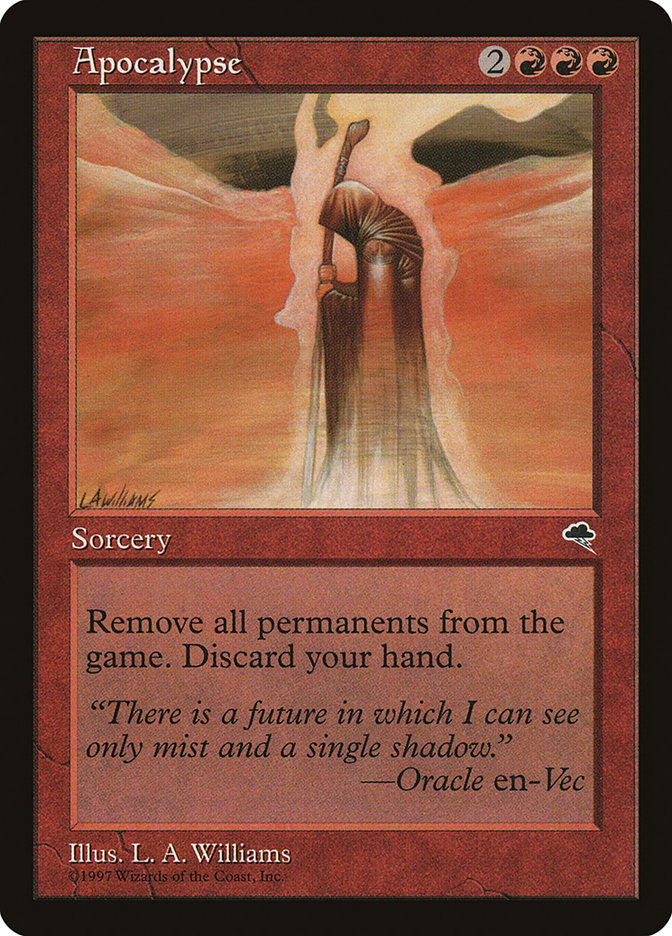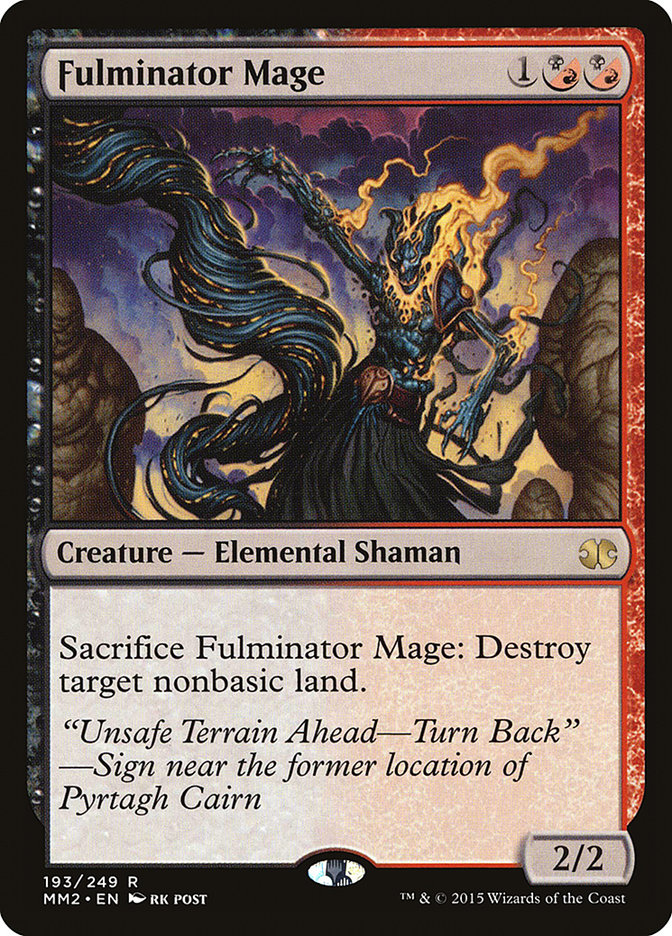“You maniacs! You blew it up! Ah, damn you! Damn you all to hell!”
-George Taylor, Planet of The Apes (1968)
The story goes like this: Mankind had just reached the pinnacle of its
strength. First came the steam engine. By the time a scant 200 years had
passed, they’d split the atom, brought about the Green Revolution to feed
billions of new lives, landed on the moon, read the entire human genome,
and brought rudimentary thinking machines into existence. The fruits of
years of work had finally blossomed into the closest thing to Paradise they
might ever have imagined. But it came with a cost. Humanity was pulling
carbon out of the Earth as quickly as possible, belching greenhouse gases
into the atmosphere at a prodigious rate, and it was warming the world.
Imperceptibly at first, but bit by bit, the climate began responding to the
additional fuel with more extreme storms, more droughts, shifting
coastlines, and rapid changes to Earth’s ecosystems.
At first, people tried to ignore the signs around them, but once the
consequences were too painful (and painfully obvious), they began to try,
one after another, more and more radical methods to close the proverbial
Pandora’s Box. As it invariably does, legislation came too little, too
late, and humans had to begin abandoning their coastal metropolises in
droves. Carbon sequestration techniques were a noble effort, but failed to
make an impact, as by 2040 the raised temperatures were starting a runaway
feedback loop that was releasing carbon dioxide and other greenhouse gases
far faster than people could pack it back into the ground. Next came the
attempts to spray the sky, to brighten the clouds to reflect more solar
radiation and cool off the planet. These too failed.
Finally, as a last-ditch, high-risk resort, humans decided to envelop their
planet in a cloud of space dust to block over half of the sun’s rays before
it even hit the upper atmosphere. This worked…a little too well. Crops
failed on a massive scale, thousands of species instantly went extinct, and
99% of humans died in the ensuing ice age. The few survivors subsisted on
the meager rations they could scrape out of their hydroponic farms in old,
empty missile silos left over from the Cold War, with nothing to warm them
but the residual heat from the scattered fusion reactors engineers had
managed to plant deep underground in humanity’s last days. Rather than
spreading his dominion across the galaxies, mankind was left huddling in a
forgotten corner of the Universe, a victim of his own meddling and lack of
temperance.
Thus did humans learn a painful lesson: not to attempt to inject new inputs
into an unstable, yet eminently livable dynamic equilibrium. Chaotic
systems can, as their name suggests, suffer unpredictable consequences when
exposed to outside agents.
There are more parallels between a dystopian tale of climate change gone
berserk and recent management of Magic’s competitive ecosystem than most
would care to admit. Sure, Wizards of the Coast is not going to destroy the
world with irresponsible printings and intemperate management of the banned
and restricted list, but they may very well damage their brand and the
confidence players have in their stewardship of competitive Magic.
Let’s go over some of the recent trends and pressures facing Magic. The
large meta-pressure of powerful competitor brands in the digital space is
omnipresent, of course. Hasbro is a publicly traded corporation, beholden
to its shareholders and the need to maximize shareholder value. As such,
Wizards of the Coast is incentivized to ramp up its production of sets with
low development overhead and huge expected revenues (read: Masters
sets), which it has done with gusto. Modern Masters was released
almost five years ago to much excitement, but now we are being overloaded
with sets like Modern Masters 2017, Eternal Masters, Iconic Masters, Masters 25, and probably more in the
future. This, right here, is too much of a good thing. Like tax cuts and
deficit spending, it will provide a short-term boost for Wizards’ bottom
line, but if overused there are a number of damaging consequences, and
eventually these “revenue steroids” will run dry. Non-renewable resources
like a reprint of a chase mythic should be used carefully and
conservatively.

The second major pressure on Wizards is the recent mismanagement of
Standard, which looms large over their decisions as of late. A massive
swath of bannings in the past year (alongside the increased exposure of
digital-only card games and their attendant active-errata policies) has
inured both Wizards and their customer base to the impact of messing around
with sanctioned formats. This hands-on approach to managing bans means that
players are more and more accustomed to getting their way when it comes to
complaining about a format and then seeing nanny Wizards come in and take
away the problem. I’ve touched on this before, in
my article after the recent Standard bannings
.
The combination of these two pressures mean that Wizards is increasingly
incentivized to stick their hands into formats and mess around with dynamic
equilibrium that unquestionably do not need to be messed with.
Just like with humans and our planet, there is a misplaced sense of
infallibility and “what could go wrong?” that needs to be replaced with a
cautious and logical risk-reward calculation. To use the tired old adage,
if it ain’t broke, don’t fix it. Especially don’t fix it by introducing
high-risk powerhouse cards that are known black holes for format diversity,
in the name of incentivizing players to play more expensive spells. These
cards will create a midrange arms race that will essentially end the recent
golden age of Modern.
Before we move on to specific consequences of this change, there is one
sentence from Ian Duke’s article explaining the decision that I’d like to
address, if I may:
”
Ultimately, our fundamental goal in making changes to the B&R list
is to make Magic formats the most fun they can be.”
Let’s put aside personal biases for a moment, old love affairs with
Standard powerhouses from eight years ago. Modern, prior to the unbanning,
was by far the most popular Magic format, so wildly successful that the SCG
Tour was deliberately re-engineered to be 90+% Modern (or Team Constructed)
events. This was not an accident. Modern events on the SCG Tour routinely
sold out, and the Modern Pro Tour broke viewership records by a significant
margin. By what metric was this format less than the most fun it could be?
By what metric was it in need of intervention? Modern was doing literally
everything that could be asked of it. It singlehandedly propped up
competitive Magic while Standard languished under four consecutive
oppressive regimes. If Modern was a 9/10 on a hypothetical “fun format
scale,” why in the world was there a need to tinker with it? Why not save
the unbans for a time when the format might be in dire need of a shakeup?
And how much better could it possibly get? Or rather, how much worse?
How much worse, indeed…
- Humans is dead.
- Lantern Control is dead.
- Abzan Midrange (a la Reid Duke’s Pro Tour deck) is stillborn.
- Mardu Pyromancer (a la Gerry Thompson’s Pro Tour deck) is dead.
- U/W Control (a la Alex Majlaton’s Pro Tour deck) is dead.
- Grixis Death’s Shadow is severely weakened.
- Traverse Death’s Shadow is severely weakened.
- Jeskai Control is severely weakened.
-
Abzan Company is severely weakened (not that it was much of a
player in recent events, anyway).
This is the format you wanted, Wizards? All the midrange decks coalesce
into Grixis Control and Jund? You poor fools.
The initial beneficiaries from this midrange fiesta look to be Tron and
Scapeshift, until one stops to realize that all the midrange decks will
incorporate Kolaghan’s Command and four Fulminator Mage (and possibly even
Liliana, the Last Hope). This serves two purposes. The first is to allow
the midrange decks to harass the big mana decks with repeated Stone Rains.
The second is to try to pin semi-mirrors on mana, which will be a major key
to success when Kolaghan’s Command loops are the best way to pull ahead in
grindy affairs. The dual incentive to include Fulminator Mage is enough to
ensure that Tron and Scapeshift don’t take over the format, but rather
remain thoroughly adequate yet unremarkable choices in a midrange-dominated
metagame.
It’s also laughable when someone like Brad Nelson makes comments to the
effect of “I wonder how Jace and Bloodbraid Elf will stack up against
powerful cards like Reality Smasher”?
Here’s a hint, Bradley. They will dominate the Eldrazi. Fulminator Mage and
Kolaghan’s Command together mean it will be a challenge for Eldrazi Tron to
pull ahead, and it’s not like Eldrazi Tron is aggressive enough to get
under Jace particularly well. Goodbye to fun mashup decks like Eldrazi
Tron. We hardly knew ye.
Incidentally, the rise of Fulminator Mage means that Celestial Colonnade
decks are handicapped in a number of ways. First, Path to Exile is worse
against these mana-intensive Kolaghan’s Command loops. Second, Colonnade
itself was a reliable win condition for U/W/x against B/G/x for ages, but
not anymore. Third, Colonnade decks don’t get to incorporate Kolaghan’s
Command, which will be a huge detriment in the midrange and control
matches.
Additionally, some pundits don’t recognize how hard these two new cards
make life for Death’s Shadow decks. Grixis Death’s Shadow has literally no
way to kill a resolved Jace on a stable battlefield. Its delve threats are
flaccid in the face of the -1 ability, and its Shadows are juicy targets
for a Fatal Push or two. Grixis Control and B/G/x (depending on the list)
were already tough but winnable matchups for Grixis Death’s Shadow, and
Jace puts Grixis Control even further ahead. As for Bloodbraid Elf, it
makes life increasingly nerve-wracking for the Street Wraith cyclers among
us. At five life, Lightning Bolts and Kolaghan’s Commands off the top or
off a cascade are reason to sweat. Bloodbraid Elf off the top can end a
game against a tapped out Death’s Shadow player in situations where no
previous B/G/x deck could have hoped to come back. It only takes a few
percentage points to shift these close midrange matchups, and the increased
odds of drawing a live way to end the game on the spot makes things ugly
for Grixis and Traverse Death’s Shadow. Heavy grindy midrange decks with
tons of backdoor outs to kill a low life total Shadow player are a recipe
for a diminished presence of everyone’s favorite 13/13.
There are a few hardy survivors of this midrange apocalypse. None
of them scream “fun” to me, but perhaps my readers will think differently.
They are:
- Burn
- Dredge
- Living End
- Hexproof
Fun, right?
Burn will be good on the weeks that the Jund or Grixis players choose not
to play four Collective Brutality in their 75 (or Kitchen Finks, in the
case of Jund). Dredge will be good on the weeks that the midrange players
choose not to play 3-4 Nihil Spellbombs, Surgical Extractions, or Rakdos
Charms in their 75. Ditto Living End. Bogles will be good on the weeks that
the midrange players skimp on Engineered Explosives and Edict effects.
(Yes, I know Bogles can sideboard Leyline of Sanctity. There is only a 40%
chance of drawing one of those in an opening hand. You can mulligan for it,
but you cannot rely on it to protect you from Edicts round after round).
Is this the exciting, interactive format we were promised?

Other linear decks, like Storm, Ad Nauseam, and Affinity are easier to
interact with via normal midrange means, and will consequently not be very
good in the new Modern format. Affinity is not stellar in a format where
the best decks are packing six one-mana removal spells, four Kolaghan’s
Commands, and sideboarding Kozilek’s Return if needed. Ad Nauseam has a
hard time beating discard and countermagic, and while Jund only packs one,
Grixis packs both of those. Storm is weak to heavy discard and
countermagic, especially when backed up with a clock or graveyard hate.
With Engineered Explosives and/or Kozilek’s Return for the attempted
cheese-out Empty the Warrens kill, these midrange decks will likely remain
favorites over Storm.
Here are your two new overlords. Feel free to tinker with them; you won’t
be tinkering with much else in Modern in the near future. I hope you’re
happy.
Creatures (17)
Planeswalkers (1)
Lands (24)
Spells (18)

Creatures (9)
Planeswalkers (3)
Lands (25)
Spells (23)





